Michigan’s vast geological history spans over 3 billion years, and its Upper Peninsula alone has more than 150 different mineral species. Yet, many rock hunters don’t know that our state holds some surprising opal deposits.
Looking for opal can be tricky, especially if you’re not sure where to start. We’ve spent months talking to local collectors and geologists to find the most promising spots where you might get lucky.
Now, we’ll tell you the best places to hunt for opal in Michigan. We’ve done the hard work of finding these locations so you won’t waste time searching in the wrong areas.
How Opal Forms Here
Opal forms here through a fascinating natural process. When water containing silica seeps into cracks and voids in rocks, it begins to evaporate, leaving behind tiny silica spheres.
Over time, these spheres stack in a grid-like pattern, creating opal. This process can take millions of years!
The colors in opal come from the way light refracts through the silica spheres. Different conditions in the ground, like the type of rock and the presence of other minerals, can affect the opal’s type, color, and quality.
The Types Of Opal
There are several incredible types of Opal that can be found in the US as well as in our state. Each is uniquely beautiful and interesting including:

Common Opal
Common opal, also known as “potch,” stands out from other types of opal due to its lack of play-of-color, the iridescent display seen in precious opal. Instead, common opal features consistent, solid colors like white, pink, yellow, green, and blue.
It typically has a waxy to pearly luster and ranges from opaque to translucent. To identify common opal, look for its uniform color and absence of the shimmering color flashes found in precious opal.
Common opal forms under similar geological conditions as other opals, where silica-rich water seeps into rock cavities and slowly hardens over time. This process usually occurs in areas with volcanic activity or hot springs, where silica deposits are prevalent.

Fire Opal
Fire opal is known for its warm, vibrant colors, ranging from yellow and orange to deep red. Unlike precious opal, fire opal may or may not display the play-of-color, but its fiery body color makes it unique.
To identify fire opal, look for its bright, translucent to transparent appearance and the absence or presence of play-of-color within the warm hues.
Fire opal forms in volcanic regions where water rich in silica interacts with hot lava, filling cavities and fractures within the rock. Over time, the silica solution hardens, creating opal.
Visually, fire opal’s appeal lies in its vivid, flame-like colors that can be either uniform or exhibit internal flashes of color.

Boulder Opal
Boulder opal forms within the ironstone boulders of its host rock. Unlike other opals, boulder opal features precious opal veins intertwined with the natural rock, creating a beautiful contrast.
This opal is distinguished by its combination of colorful opal patches and the surrounding matrix, which can include ironstone or sandstone. To identify boulder opal, look for its vibrant play-of-color within the darker host rock, often showcasing brilliant blues, greens, and reds.
Boulder opal forms in sedimentary environments where silica-rich water infiltrates cracks and voids within ironstone or sandstone boulders. Over time, the silica hardens into opal, often creating thin seams or patches within the rock.

Hyalite Opal
Hyalite opal, also known as water opal, is a transparent to translucent type of opal that is distinctive for its glass-like appearance and lack of play-of-color. Unlike precious opal, which displays a rainbow-like iridescence.
You can identify hyalite opal by its clear to milky appearance, often with a slight green or blue fluorescence under UV light.
Hyalite opal forms in low-temperature hydrothermal environments, typically in volcanic regions. It precipitates from silica-rich fluids that fill cracks and voids in the host rock. This process can occur relatively quickly compared to other opal types.
Visually, hyalite opal resembles droplets of water or glass, often appearing as smooth, botryoidal (grape-like) formations. Its transparent nature makes it unique among opals, and its slight fluorescence adds to its allure.

Black Opal
Black opal is a rare and highly prized variety known for its dark body tone, which enhances the vibrant play-of-color. Unlike other opals, black opal has a deep background color, ranging from dark gray to jet black, making the iridescent colors more striking.
To identify black opal, look for its intense, dark base color coupled with brilliant flashes of blues, greens, reds, and other hues.
The presence of iron and carbon contributes to its dark body color. In the United States, black opal is primarily found in the Virgin Valley of Nevada, known for its rich opal deposits.

Crystal Opal
Crystal opal is known for its transparent to translucent body, which allows the play-of-color to shine through brilliantly. Unlike common opal, which is opaque, crystal opal’s clear or semi-clear nature enhances its vibrant internal colors.
To identify crystal opal, look for its see-through quality combined with flashes of color that can include blues, greens, reds, and more.
Its unique transparency sets crystal opal apart, making it a favorite among gem enthusiasts and collectors for its ethereal beauty.
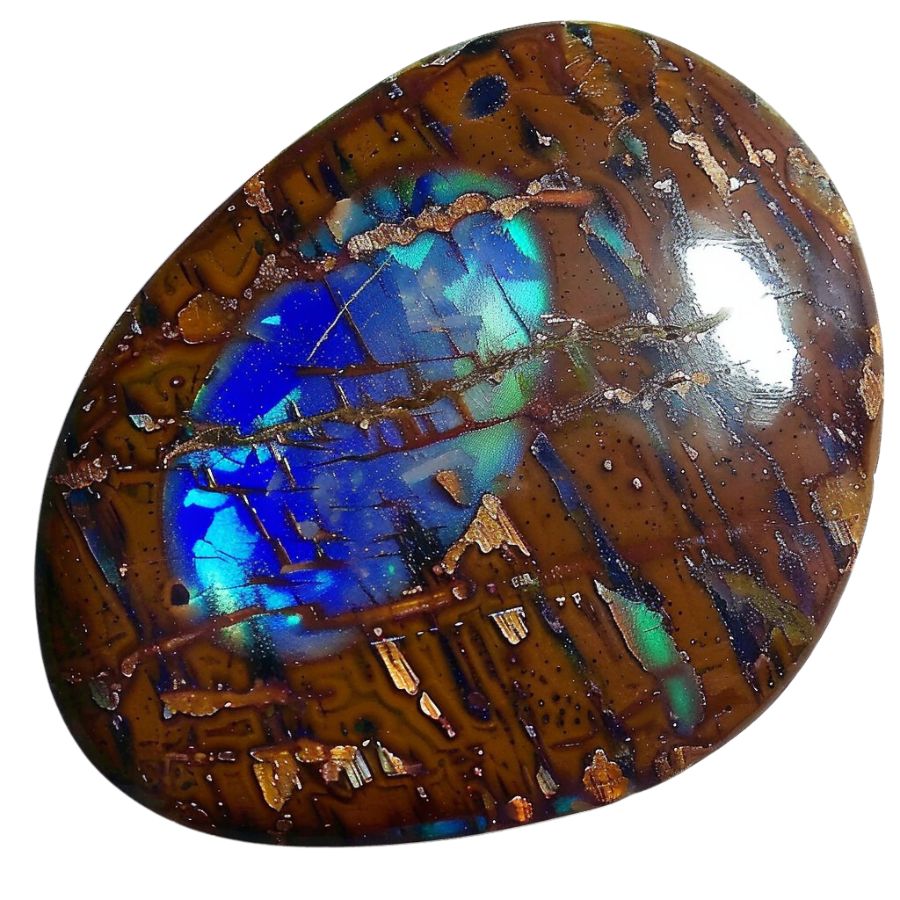
Wood Opal (Opalized Wood)
Opalized wood is a fascinating form of petrified wood where the organic material has been replaced by opal. Unlike other opals, opalized wood retains the original structure and texture of the wood, creating a unique blend of organic and mineral elements.
To identify opalized wood, look for its wood grain patterns and opalescent sheen, often displaying a range of colors from white and brown to vibrant reds and greens.
Opalized wood forms under specific conditions where wood is buried in silica-rich sediment. Over millions of years, the silica solution gradually replaces the organic wood material with opal, preserving the wood’s original structure in stunning detail.

Contra Luz Opal
Contra Luz opal reveals its vibrant play-of-color when illuminated from behind. Unlike other opals, which display their colors through surface reflection, contra luz opal’s brilliance comes to life with transmitted light.
To identify contra luz opal, hold the gem against a light source and observe the internal flashes of color, which can include vivid reds, blues, greens, and purples.
This opal forms in volcanic environments where silica-rich water infiltrates cracks and cavities in the host rock. As the water evaporates, it leaves behind silica deposits that eventually solidify into opal.
Visually, contra luz opal appears nearly clear or milky when viewed without backlighting. However, when backlit, it displays stunning, colorful patterns that seem to glow from within.
What Rough Opal Looks Like
When you’re out looking for rough opal on your own it’s important to know what you’re looking for.
DON'T MISS OUT ON ANY GREAT FINDS!
While you're out searching for Geodes you're going to find a lot of other interesting rocks and minerals along the way. The last thing you want to do is toss out something really interesting or valuable. It can be easy to misidentify things without a little guidance.
We've put together a fantastic field guide that makes identifying 140 of the most interesting and valuable rocks and minerals you will find REALLY EASY. It's simple to use, really durable, and will allow you to identify just about any rock and mineral you come across. Make sure you bring it along on your hunt!
This is what you need to look out for:
Look for exteriors like this
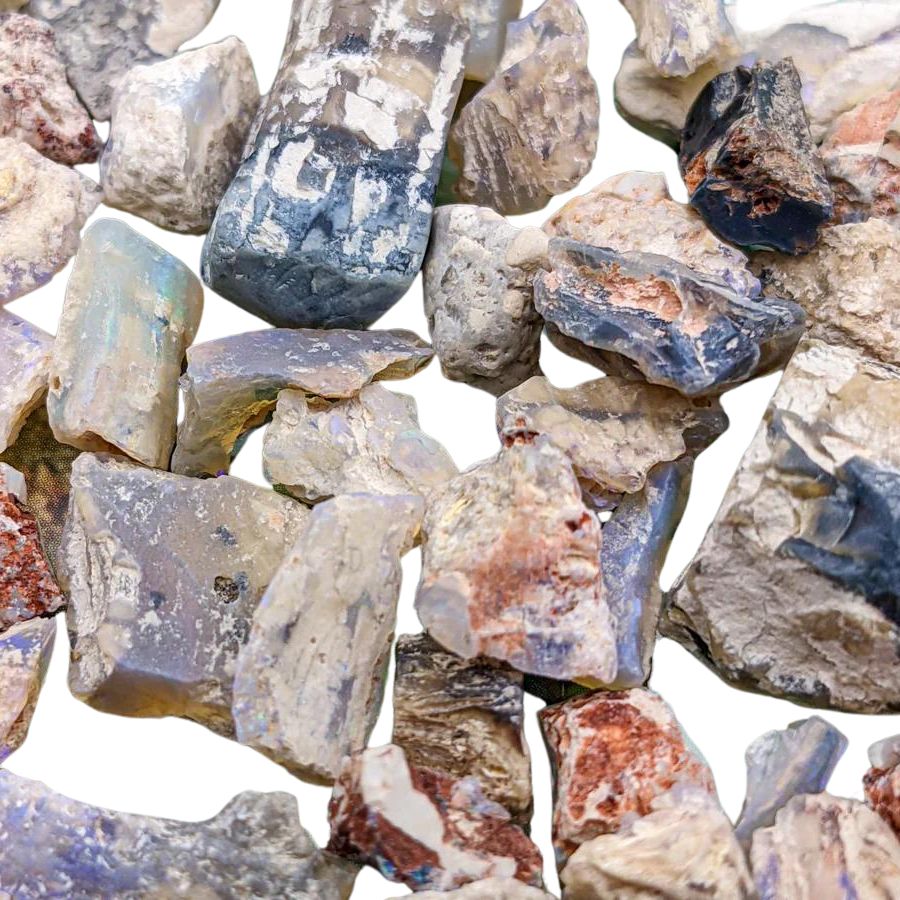
Look for play-of-color

Opal can display a range of colors, but what sets precious opal apart is its play-of-color—vivid flashes of multiple colors that change with the angle of light. Even in rough form, you might see hints of these colors peeking through.
Common opal lacks this feature and typically appears as a solid color like white, blue, or pink.
Check for a glassy or waxy luster

Opal often has a distinctive glassy or waxy luster. When you find a potential opal, examine its surface.
It should look shiny and smooth, almost like glass, even if it is still encased in a matrix or rough exterior.
Assess the density and weight
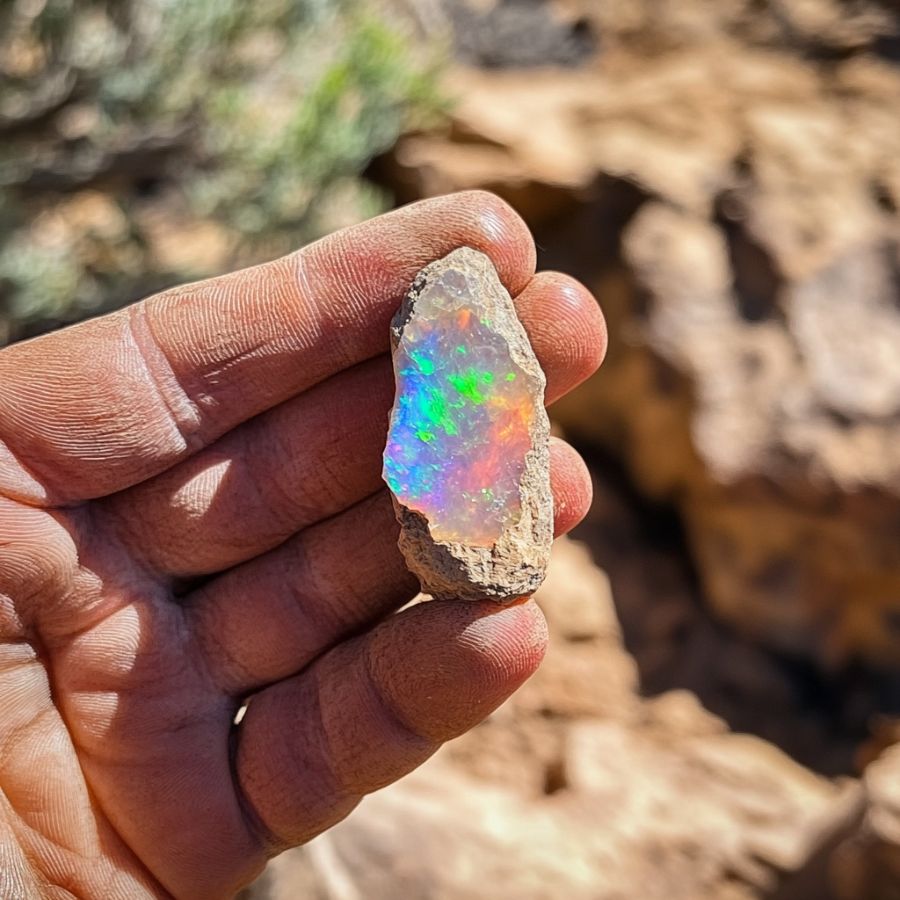
Opal is generally lighter than rocks of a similar size. When you pick up a piece of rough opal, it should feel lighter than expected.
Additionally, opal is relatively soft, with a Mohs hardness of 5.5 to 6.5, so it can be scratched more easily than quartz or other harder minerals.
A Quick Request About Collecting
Always Confirm Access and Collection Rules!
Before heading out to any of the locations on our list you need to confirm access requirements and collection rules for both public and private locations directly with the location. We haven’t personally verified every location and the access requirements and collection rules often change without notice.
Many of the locations we mention will not allow collecting but are still great places for those who love to find beautiful rocks and minerals in the wild without keeping them. We also can’t guarantee you will find anything in these locations since they are constantly changing.
Always get updated information directly from the source ahead of time to ensure responsible rockhounding. If you want even more current options it’s always a good idea to contact local rock and mineral clubs and groups
Tips on where to look
Once you get to the places we have listed below there are some things you should keep in mind when you’re searching:
Search in Sedimentary Rock Formations

Opal can also form in sedimentary rock formations where silica deposits have accumulated over time.
Focus on areas with ancient lake beds or clay deposits, as these environments are conducive to opal formation.
Check Dry Creek Beds and Gullies

Dry creek beds and gullies can be excellent places to find opal, as water flow can erode and expose opal-bearing rocks.
Look for exposed rock and gravel in these areas, especially after rainfall or seasonal flooding.
Investigate Old Mining Sites

Abandoned or historical mining sites can be rich in opal and other minerals. These areas often have tailings and discarded rock that may still contain opal.
Always seek permission if the land is privately owned and follow safety guidelines.
Look for Indicator Minerals

Certain minerals can indicate the presence of opal. Look for rocks and soil containing ironstone, sandstone, or clay, as these materials often coexist with opal deposits.
Additionally, finding quartz or chalcedony can suggest nearby opal.
The types of Opal can you find around the state
1-2 paragraphs about the types of opal found in the state. You can also include a bulleted list if there are a lot.
Some Great Places To Start
Here are some of the better places to start looking for Opal in Michigan:
Always Confirm Access and Collection Rules!
Before heading out to any of the locations on our list you need to confirm access requirements and collection rules for both public and private locations directly with the location. We haven’t personally verified every location and the access requirements and collection rules often change without notice.
Many of the locations we mention will not allow collecting but are still great places for those who love to find beautiful rocks and minerals in the wild without keeping them. We also can’t guarantee you will find anything in these locations since they are constantly changing.
Always get updated information directly from the source ahead of time to ensure responsible rockhounding. If you want even more current options it’s always a good idea to contact local rock and mineral clubs and groups
Champion Mine
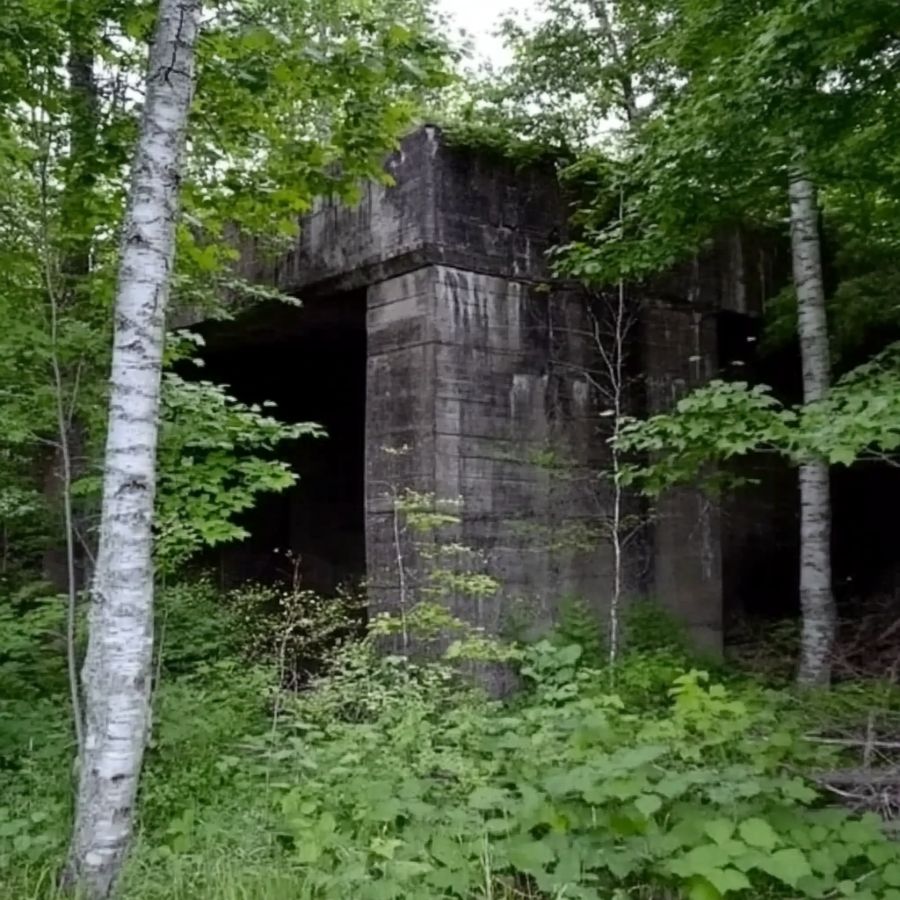
Champion Mine is located in Marquette County in Michigan’s Upper Peninsula. This historic iron mining site is close to the small town of Champion. The mine is part of the ancient Canadian Shield, with rocky hills and rough terrain.
Rockhounds can search for Opal through the mine’s dump piles. These waste rocks from old mining operations often hide gemstones that miners didn’t care about when they were looking for iron.
The best spots to look are in the exposed rock faces and scattered pieces near the old mine workings.
The mine’s location in the Superior Upland means you’ll be searching through some of North America’s oldest rock formations while looking for opals.
Cliff Mine

The historic Cliff Mine sits in Keweenaw County in Michigan’s Upper Peninsula. It was once the region’s most successful copper mine and is now a popular spot for rock collectors.
The mine is famous for its rich deposits of copper and silver, but it’s also where rockhounds can find opals. The geology here is special because of its deep fissure veins that cut through ancient basalt rock layers.
The mine’s unique structure, with its nearly vertical vein running north-south, created perfect conditions for mineral formation. The area under the greenstone flow was especially rich in minerals.
Today, the site serves as both a historical landmark and a treasure spot for mineral collectors. The rock piles still hold secrets for those willing to look carefully through them.
Rockport State Recreation Area
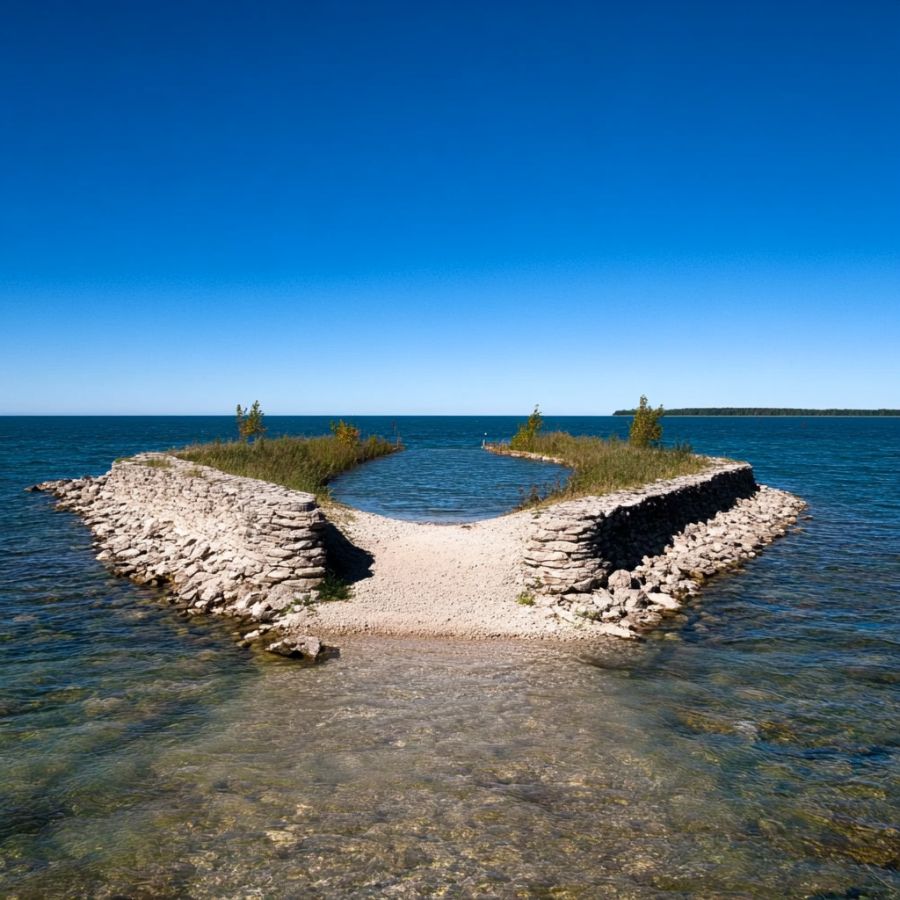
Rockport State Recreation Area is on Lake Huron’s shore in Michigan’s Alpena County. This 4,237-acre park is famous for its massive limestone quarry that covers 300 acres. The quarry dates back to the Devonian Period, about 400 million years ago, when this area was under an ancient sea.
The park’s main draw for rock collectors is its abandoned limestone quarry. The quarry walls hold layers of fossils from ancient sea creatures.
The best spots to look for opals are along the quarry’s edges and in the scattered rock piles. Besides opals, you might find Petoskey stones, which are actually fossilized coral. The area also has many sinkholes formed by water dissolving the limestone over time.
The park offers easy access with marked trails leading to the quarry. Many rock collectors visit during spring and fall when the temperatures are mild.
Keweenaw Peninsula

The Keweenaw Peninsula stretches into Lake Superior from Michigan’s Upper Peninsula. It’s known for its rocky shores and thick forests. This area has a rich mining history that goes back hundreds of years.
The peninsula sits on billion-year-old volcanic rocks that formed when the earth split apart long ago. These ancient volcanic rocks created perfect conditions for minerals to form.
While the area is most famous for its copper deposits (the largest native copper deposit in the world), other minerals like opal can be found here too.
The beaches and cliffs along Lake Superior are good spots to look for rocks and minerals. The area around Eagle Harbor and Copper Harbor has many spots where rocks and minerals are easy to find.
Lake Superior Beaches

Lake Superior Beaches are located in the northwest part of Michigan. The beaches are part of the Pictured Rocks National Lakeshore, which stretches from Munising to Grand Marais.
The beaches are famous among rock collectors for their unique stones. Lake Superior Agates, with their bright bands of color, are common finds here. You might also spot Yooperlites while searching for opal here.
The best places to look for stones are along the eastern beaches between Grand Marais and Sault Ste. Marie. Search the sandy shores and gravel areas after storms when waves wash up new rocks.
The ancient volcanic activity in this area created perfect conditions for forming different minerals. The glaciers that moved through this region millions of years ago also brought interesting rocks from far away.
Places Opal has been found by county
After discussing our top picks, we wanted to discuss the other places on our list. Below is a list of the additional locations where we have succeeded, along with a breakdown of each place by county.
| County | Location |
| Ontonagon | Caledonia Mine |
| Keweenaw | Delaware Mine |
| Houghton | Quincy Mine |
| Keweenaw | Central Mine |
| Ontonagon | Adventure Mine |
| Keweenaw | Seneca Mine |
| Houghton | Calumet & Hecla Mine |
| Keweenaw | Isle Royale National Park |
| Houghton | McLain State Park |
| Alger | Agate Beach |
| Marquette | Presque Isle Park |
| Emmet | Petoskey State Park |
| Charlevoix | Fisherman’s Island State Park |
| Leelanau | Van’s Beach |
| Benzie | Point Betsie Lighthouse Beach |
| Leelanau | Peterson Park |
| Leelanau | Christmas Cove |
| Van Buren | Deerlick Creek Park |
| Allegan | Pier Cove Park |
| St. Clair | Lakeport State Park |
| Chippewa | Whitefish Point |
| Alger | Grand Marais Harbor Beach |
| Keweenaw | Copper Harbor |
| Keweenaw | Eagle Harbor |
| Keweenaw | Manitou Island |
| Houghton | Torch Lake |
| Charlevoix | Norwood Township |


